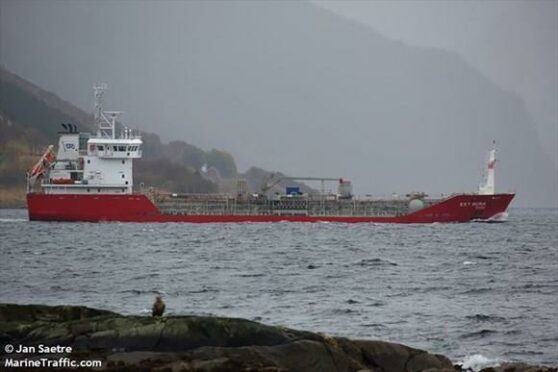A chemical tanker ran aground after hitting a boulder near the Skye bridge that was missed in local mapping surveys, a report has said.
The 93-metre long Key Bora, which was transporting fish oil and rapeseed oil from Denmark, hit a boulder as it made its final approach to Kyleakin Pier.
Rupturing its hull in the collision, the vessel took on water and ran aground for about 12 minutes before re-floating.
A report conducted by the Marine Accident Investigation Branch (MAIB) stated no injuries or pollution occurred as a result of the March 28, 2020 incident.
It was the first time the vessel had arrived at the pier and it was hoped its arrival would coincide with low water.
However, the grounding occurred due to locally produced survey data not showing the obstruction near the pier.
‘Data appeared to be reliable’
In the report, the MAIB said: “This survey data appeared to the crew to be reliable and accurate, so was preferred to the electronic chart display and information system (ECDIS) data, which did show the obstruction.
“This investigation also identified safety management issues at Mowi’s Kyleakin facility, including that the Port Marine Safety Code was not fully implemented.
“The passage plan needs to be based on the most accurate hydrographic information available; advice should be sought or the ‘most dangerous’ data used if there is a conflict.
“ECDIS safety features should be utilised to warn of danger ahead.
“The Port Marine Safety Code provides important guidance to assure safe maritime operations in ports and harbours.”
Following the report several safety recommendations have been made to Mowi to keep the Kyleakin facility up to safety code requirements.
They have also suggested upgrading the area to a statutory harbour authority.
